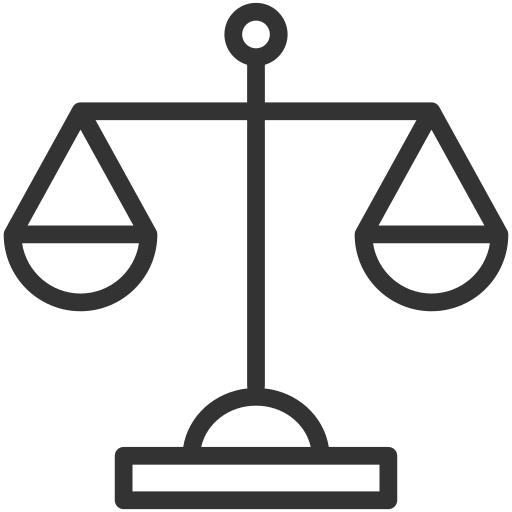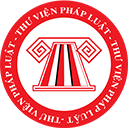|
THE MINISTRY OF INDUSTRY AND TRADE OF VIETNAM |
THE SOCIALIST REPUBLIC OF VIETNAM |
|
No. 22/2024/TT-BCT |
Hanoi, November 07, 2024 |
PROMULGATING PROCEDURE FOR TECHNICAL INSPECTION OF OCCUPATIONAL SAFETY OF COMPOSITE LPG CYLINDERS
Pursuant to the Law on Occupational Safety and Health dated June 25, 2015;
Pursuant to the Government’s Decree No. 44/2016/ND-CP dated May 15, 2016 elaborating on several Articles of the Law on Occupational Safety and Health on technical inspection of occupational safety, occupational safety and health training and workplace environment monitoring;
Pursuant to the Government’s Decree No. 96/2022/ND-CP dated November 29, 2022 defining functions, tasks, powers and organizational structure of the Ministry of Industry and Trade and Government’s Decree No. 105/2024/ND-CP dated August 01, 2024 on amendments to some Articles of the Government’s Decree No. 96/2022/ND-CP dated November 29, 2022 defining functions, tasks, powers and organizational structure of the Ministry of Industry and Government’s Decree No. 26/2018/ND-CP dated February 28, 2018 on Charter for Organization and Operation of Vietnam Electricity;
At the request of the Director General of the Industrial Safety Techniques and Environment Agency,
The Minister of Health hereby promulgates a Circular promulgating procedure for technical inspection of occupational safety of composite LPG cylinders.
Article 1. Promulgated together with this Circular is the procedure for technical inspection of occupational safety of composite LPG cylinders, code: QTKD: 19-2024/BCT.
1. This Circular comes into force from January 15, 2025.
2. Composite LPG cylinders inspected before the effective date of this Circular may be used until the expiry date written on the certificate of inspection result.
Article 3. Organizing implementation
1. The Industrial Safety Techniques and Environment Agency shall provide guidelines on and organize the implementation of this Circular.
2. Difficulties that arise during the implementation of this Circular should be reported to the Ministry of Industry and Trade for consideration and resolution./.
|
|
PP. THE MINISTER |
TECHNICAL INSPECTION OF OCCUPATIONAL SAFETY OF COMPOSITE
LPG CYLINDERS, CODE: QTKD: 19-2024/BCT
(Enclosed with the Circular No. 22/2024/TT-BCT dated November 07, 2024 of
the Minister of Industry and Trade)
1. The procedure for technical inspection of occupational safety of composite LPG cylinders shall be used for first, periodic and unscheduled inspections of composite LPG cylinders (hereinafter referred to as “Procedure”) under state management of the Ministry of Industry and Trade as prescribed in Appendix Ib to the Government’s Decree No. 44/2016/ND-CP dated May 15, 2016 elaborating on several Articles of the Law on Occupational Safety and Health on technical inspection of occupational safety, occupational safety and health training and workplace environment monitoring.
2. This procedure does not apply to mini LPG cylinders used for portable gas stoves, refillable welded steel cylinders for LPG.
1. Enterprises, agencies, organizations and individuals owning and using composite LPG cylinders (hereinafter referred to as “establishments”).
2. Organizations carrying out technical inspections of occupational safety (hereinafter referred to as “inspecting organization”) and inspectors granted the certificate of inspection of group D (LPG cylinders).
Article 3. Technical regulations, standards applied:
1. Technical regulations, standards applied:
a) QCVN 16:2022/BCT, National technical regulation on safety of composite LPG cylinder.
b) TCVN 7389:2013, Gas cylinders - Fitting of valves to gas cylinders.
2. In the cases where any of the national technical regulations and national standards referred to in this inspection procedure is supplemented, amended or replaced, the newest one shall apply..
Article 4. Inspection forms and inspection interval
1. First inspection: Before being put into service.
2. Periodic inspection
a) After the last safety inspection result expires.
b) For composite LPG cylinders that have been used for less than 17 years (from the first inspection), the inspection interval is specified by the manufacturer but must not exceed 05 years from the most recent inspection.
c) For composite LPG cylinders that have been used for 17 years to less than 20 years (from the first inspection), the next inspection must be carried out before it reaches the 22 year mark.
d) For composite LPG cylinders that have been used for 20 years, the periodic inspection interval must not exceed 02 years.
3. Unscheduled inspection: When the establishment deems it necessary or the competent authority so requests.
Article 5. Organizing implementation
1. For an establishment:
a) Undergo inspections within the prescribed time limit.
b) Provide documents and technical documentation related to composite LPG cylinders to be inspected to the inspecting organization.
c) Appoint representatives to witness or cooperate in inspections.
2. For an inspecting organization
a) According to this procedure and national technical regulation on safety of composite LPG cylinders, each organization carrying out technical inspection of occupational safety shall establish a detailed procedure for technical inspection of occupation safety of composite LPG cylinders which must not be contrary to regulations specified under this procedure and national technical regulation on safety of composite LPG cylinders.
b) Only inspect composite LPG cylinders at an inspecting organization’s inspection facility granted the certificate of eligibility for technical inspection of occupational safety of group D (LPG cylinders) by the Ministry of Industry and Trade.
c) Conduct inspections in compliance with related standards and regulations on technical safety.
d) Conduct inspections by taking the steps specified in this procedure to give an accurate conclusion of status of composite LPG cylinders.
dd) Prepare inspection records and issue the certificate of inspection result as prescribed.
Article 6. Inspection equipment and instruments
Inspection equipment and instruments must be inspected or calibrated in accordance with regulations, including:
- Equipment for cylinder valve installation/removal.
- Hydraulic testing equipment.
- Cylinder leak tester.
- Equipment for treating residual gases.
- Vacuum equipment.
- Valve tester.
- Equipment for in-cylinder examination by endoscopic method.
- Pressure gauge, time measuring device.
- Scale.
- Number printing equipment.
- Mechanical measuring instruments: calipers, tape measures.
Article 7. Conditions for inspection
When conducting an inspection, the following conditions must be met:
1. Documents of composite LPG cylinders are adequate.
2. The inspection is not affected by environment or weather.
3. Conditions concerning safety are met.
1. Preparation before inspection
When conducting an inspection, it is required to make the following preparations:
a) Agree to the inspection plan and preparations and cooperation between the inspecting organization and the establishment, including the following:
- Preparing documents of cylinders.
- Determining cylinders to be inspected
+ First inspection: Randomly select 5% of the batch of cylinders to be inspected. If any of the inspected cylinders is found failed, 100% of the cylinders in the batch must be inspected.
+ Regarding periodic or unscheduled inspection: inspect 100% of the cylinders.
b) Prepare a delivery record (including the list of received cylinders according to the form in the Appendix 04), make preparations in respect of human resources and vehicles for transport of cylinders to the place of inspection.
c) Preliminary inspection and instructions:
- Check the technical specifications written on the handle or neck of each cylinder, compare them with the technical data on the cylinder on the list of cylinders to be inspected. Reject cylinders not included in the list of cylinders to be inspected and cylinders on which specifications are missing or blurred or cylinders which have reached the end of their service life (in case the manufacturer specifies the service life).
- Conduct visual inspection of each cylinder to reject cylinders with abnormal phenomena occurring on pressure retaining components such as deep scratches, dents, peeling, blistering, burn marks, etc. according to the regulations in Appendix A to QCVN 16:2022/BCT.
- Treat in-cylinder residual gases by way of degassing and sucking gas with specialized equipment. The pressure in every cylinder is not greater than - 0.2 bar. The gas can then be recovered for use or treated by safe methods, and must not be discharged directly into the environment.
- Remove cylinder heads’ valves with specialized instruments and equipment.
Note: A boss holder must be used to prevent damage from rotation when removing a cylinder head's valve.
- Clean the outside of each cylinder.
2. Examine documents and profiles of cylinders
Rely on the inspection forms to examine and consider the following documents:
a) In case of first inspection:
- Documents of cylinders as prescribed in 11.3.1 of QCVN 16:2022/BCT.
+ Manufacturer’s certificate.
+ Documents on materials.
+ Attached examination and testing records.
+ Certificate of conformity issued by a designated certification body (not required for cylinders manufactured before the effective date of QCVN 16:2022/BCT).
+ Calculation of strength of pressure retaining components.
+ Structural drawings showing all main dimensions.
+ Name and address of the owner of the cylinder batch.
b) In case of periodic inspection
Previous profile of the cylinder batch, inspection record and certificate of inspection result or information and documents about the cylinders.
c) In case of unscheduled inspection
- Previous profile of the cylinder batch, inspection record and certificate of inspection result or information and documents about the cylinders.
- Examine the reason for unscheduled inspection.
3. External and internal inspection
External and internal inspection shall be conducted following the steps below:
- Check the condition of the composite cylindrical shell, threaded neck, and plastic shell.
- Check the inside of the cylinders with an endoscope to evaluate the inner surface.
- Reject cylinders that show the evidence of cuts, holes, scratches, bulges, cracks, delamination, burn marks or chemical damage.
Criteria for approving or rejecting a cylinder are specified in the Appendix A to QCVN 16: 2022/BCT.
4. Check cylinder heads’ valves:
- Check the ability to open the safety part of a cylinder head’s valve at the pressure written on the valve.
- Check the tightness of a cylinder head’s valve with compressed air or inert gas at the test pressure specified by the manufacturer which must not be less than the saturated vapor pressure of propane at the highest permissible operating temperature of the cylinder specified by the cylinder manufacturer.
- Reject valves which are stuck, have their safety parts damaged, show signs of cracking or damaged threads or fail the tightness test.
5. Hydraulic test
a) The strength test may be performed on each cylinder or a group of cylinders depending on the design of the hydraulic testing system.
b) Test medium: Water.
c) The test pressure is equal to the test pressure written on the cylinder’s label but is not less than 30 bar.
d) Holding time at the test pressure: At least 30 s.
dd) Process for conducting a hydraulic test
- Fully fill a cylinder with water.
- Gradually increase the pressure to the test pressure in point c clause 5 of Article 8. Maintain the test pressure for a minimum period of time specified in point d clause 5 Article 8 and check the technical condition of the entire surface of the cylinder to determine the location of deformation, cracking or leakage. Then gradually decrease the pressure and completely drain water from the cylinder.
Result evaluation: A cylinder passes the hydraulic test when the pressure does not drop while the pressure test is maintained and there is no leakage or deformation on the cylinder's body.
+ Reject cylinders that show any sign of leakage or deformation when the in-cylinder pressure is maintained at the test pressure.
+ Remove and clean the test medium and dry the inside of cylinders.
+ Install the tested valves on the cylinders that pass the test. Valve installation torques shall comply with the regulations laid down in the Appendix A to TCVN 7389:2013.
A boss holder must be used to prevent damage from rotation when removing a cylinder head's valve.
6. Tightness test
a) The tightness test may be performed on each cylinder or a group of cylinders depending on the design of the tightness testing system.
b) Test medium: Compressed gas or inert gas.
c) Test pressure: equal to the test pressure written on the cylinder’s label or at the manufacturer’s request and not less than the value specified in 11.3.3.d of QCVN 16:2022/BCT.
d) Holding time at the test pressure: Long enough to conduct the test, at least 7 s.
dd) Process for conducting a tightness test:
- Fill compressed gas or inert gas to the test pressure specified in point c clause 6 of Article 8 and maintain the test pressure for a minimum period of time specified in point d clause 6 of Article 8.
- Check the tightness of the connectors and valve joints of each cylinder by immersing the entire cylinder in a water tank. Cylinders that show evidence of leakage must be treated and re-tested.
Result evaluation: A cylinder passes the tightness test if it shows no sign of leakage at any point on the entire surface of the cylinder, cylinder valve and the joint between the valve and the neck.
Note: The period of maintaining the test pressure excludes the period of time over which gas available in the external coating escapes (if any). Lighting in the examination area must be bright enough for the naked eye to observe. The water tank in which cylinders are immersed must be cleaned and replaced regularly to ensure the necessary clarity to observe the rising air bubbles. After the immersion, the water surface must be calm before performing the inspection.
7. Degassing and vacuuming
- If a cylinder is passed, proceed to completely degas the cylinder; dry its outside; vacuum it.
- The in-cylinder pressure after vacuuming must not exceed - 0.2 bar.
8. Checking weight of cylinders
In case the actual weight differs by 0.2 kg or more from the weight printed/numbered on a cylinder, the cylinder weight must be printed/labeled according to clause 9 of this Article.
9. Processing inspection results
a) Assess the inspection results.
A cylinder passes the tests if it shows no sign of reduced performance and no abnormal phenomena occur during the tests.
b) The inspection symbol printed/labeled on each cylinder body shall comply with 9.3 of QCVN 16:2022/BCT.
- Inspection symbol shall be printed/labeled on cylinders that pass the tests.
Upon first inspection of a batch of cylinders, if the batch of cylinders meets the inspection requirements, inspection symbols must be affixed to 100% of the cylinders in the batch.
- An inspection symbol is composed of the inspection authority, inspection time and re-inspection time: [1] - [2] - [3] - [4] on the same row. If the symbol is not long enough, [1] may be separated into a separate row.
[1]: Logo or symbol of the inspecting authority.
[2]: Month and year of inspection (last two digits).
[3]: Next year of inspection (last two digits).
[4]: Weight of the cylinder (if weight changes by 0.2 kg or more).
Height of a word or number shall be at least 4 mm. The re-inspection time is specified under clause 2 Article 4 of this procedure.
c) Prepare an inspection record, list of cylinders and cylinder batches which contains sufficient information according to the form in the Appendices 02 and 03 enclosed herewith.
d) Issue the certificate of inspection result and inspection record to the establishment.
Note: The next inspection steps shall be carried out only when the result of inspection in the previous step is passed.
Inspection result documentation must be archived by the inspecting organization, organizations and individuals owning/managing cylinders. Examination reports and testing data of the cylinders must be retained for at least 02 years after the day of their next inspection.
Cylinders that fail the tests during inspection must be rejected as prescribed in 12 of QCVN 16:2022/BCT. Documents on rejected cylinders must be archived by the inspecting organization, organizations and individuals owning/managing composite LPG cylinders, including at least the following information: type of cylinder, owner, cylinder serial number, year of manufacture, manufacturer, reasons for cylinder rejection.
------------------------------------------------------------------------------------------------------
This translation is made by THƯ VIỆN PHÁP LUẬT, Ho Chi Minh City, Vietnam and
for reference purposes only. Its copyright is owned by THƯ VIỆN PHÁP LUẬT
and protected under Clause 2, Article 14 of the Law on Intellectual Property.Your comments are always welcomed



















